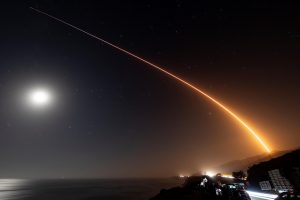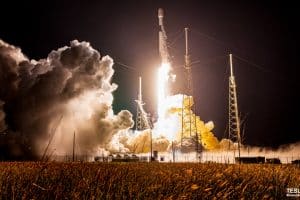- 🚀 SpaceX achieved a milestone by launching and landing a Falcon 9 for the 20th time on April 12th.
- 🛰️ The launch occurred from Space Launch Complex 40 at Cape Canaveral Space Force Station, breaking its own turn-around record with just 2 days, 19 hours, and 42 minutes between launches.
- 🎯 SpaceX aims for 144 launches in one year and is currently on track to achieve this goal.
- 🌍 Flight-proven rockets, once deemed unfeasible, have become a leading industry trend, with SpaceX leading in mission cadence and payload mass sent to orbit.
- 📈 Booster 1062, which broke the record, has launched various missions including 8 human launches, 2 GPS satellites, 2 telecommunications satellites, a batch of OneWeb internet satellites, and 13 Starlink missions.
- 🏆 Booster 1062 made its 20th landing on the droneship ‘A Shortfall of Gravitas’ and will undergo post-flight processing for its 21st flight.
- ❓ SpaceX’s continuous innovation prompts speculation on how many flights they’ll attempt with their rockets, with possibilities reaching up to 30 or more.
In the ever-evolving realm of space exploration, SpaceX continues to push the boundaries of what’s possible. Their recent achievement of launching and landing a Falcon 9 rocket for the 20th time on April 12th marks yet another milestone in their illustrious journey. Let’s delve into the intricacies of this feat and explore the broader implications for space exploration and the aerospace industry as a whole.
A Historic Feat: 20 Flights and Beyond
SpaceX’s accomplishment of launching and landing a Falcon 9 rocket for the 20th time is nothing short of remarkable. It underscores the company’s proficiency in reusability, a concept that was once considered far-fetched in the aerospace industry. With each successful flight, SpaceX solidifies its position as a trailblazer in space innovation and technology.
Breaking Turn-around Records
The launch from Space Launch Complex 40 at Cape Canaveral Space Force Station not only marked SpaceX’s 20th flight but also shattered its own turn-around record. With just 2 days, 19 hours, and 42 minutes between launches, SpaceX demonstrated its ability to optimize launch operations and minimize downtime. This efficiency is crucial as SpaceX sets its sights on ambitious goals, including 144 launches in a single year.
Redefining Feasibility: Flight-Proven Rockets Take Center Stage
Flight-proven rockets, once met with skepticism, have now become a cornerstone of SpaceX’s success. The ability to reuse rocket components not only reduces costs but also accelerates the cadence of space missions. SpaceX’s embrace of reusability has reshaped industry standards and sparked a wave of innovation across the aerospace sector.
Booster 1062: A Symbol of Resilience and Adaptability
At the heart of SpaceX’s milestone is Booster 1062, a workhorse rocket that has defied expectations time and again. From launching human missions to deploying satellites for communication and navigation, Booster 1062 embodies the versatility and reliability of SpaceX’s technology. Its 20th landing on the droneship ‘A Shortfall of Gravitas’ signifies a momentous achievement in rocket engineering.
Looking Towards the Future: Speculation and Possibilities
As SpaceX continues to push the boundaries of space exploration, speculation abounds regarding the future of their rocket fleet. With Booster 1062 paving the way, questions arise about how many flights SpaceX will attempt with their rockets. Some experts predict possibilities reaching up to 30 or more flights, highlighting the company’s unwavering commitment to innovation and exploration.
Conclusion: A Skyward Odyssey of Innovation
In conclusion, SpaceX’s 20th Falcon 9 flight represents not only a milestone in rocket reusability but also a testament to human ingenuity and perseverance. As the company propels towards new horizons, fueled by ambition and innovation, the possibilities for space exploration are boundless. With each successful launch and landing, SpaceX brings humanity one step closer to realizing the dream of interplanetary travel.





